According to this paper https://arxiv.org/abs/1512.05287 that is used for implementation of the variational_recurrent dropouts, you can think about as follows,
See the diagram below,

If you set the variational_recurrent to be true you will get an RNN that's similar to the model in right and otherwise in left.
The basic differences in above two models are,
Variational RNN repeats the same dropout mask at each time
step for both inputs, outputs, and recurrent layers (drop
the same network units at each time step).
Native RNN uses different dropout masks at each time step for the
inputs and outputs alone (no dropout is used with the recurrent
connections since the use of different masks with these connections
leads to deteriorated performance).
In the above diagram, coloured connections represent the dropped-out connections, with different colours corresponding to different dropout masks. Dashed lines correspond to standard connections with no dropout.
Therefore, if you use a variational RNN you can set all three probability parameters according to your requirement.
Hope this helps.
